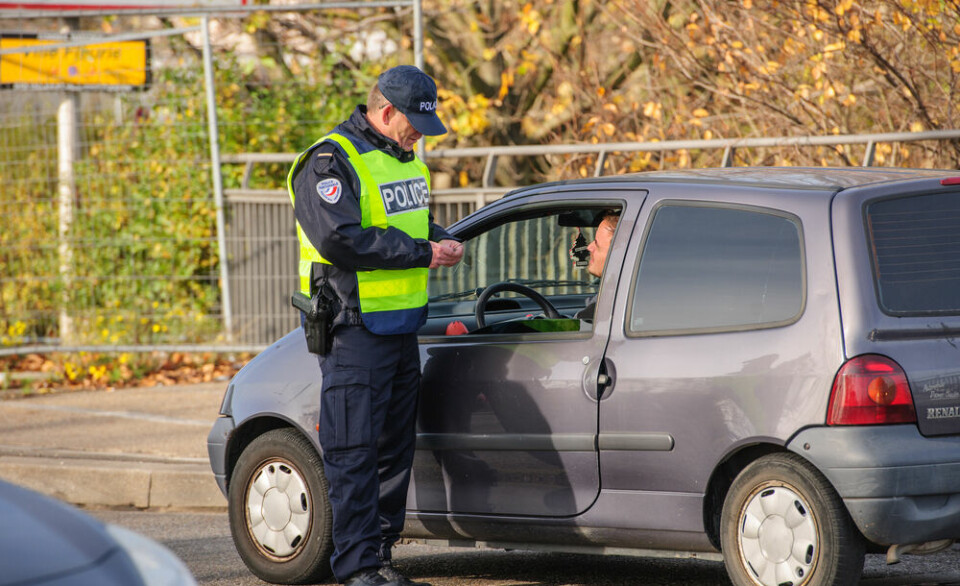-
Many Société Générale customers to be charged additional fees from April
There is some good news for international banking and instant transfers, however
-
Why gas prices in France are rising in April - and by how much
It comes after six consecutive monthly rises. Try these tips to reduce your bills
-
New notaire data suggests easing of Paris property crisis
Property experts have talked of ‘easing pressure’ and ‘breathing space’ after a four-year slump
France plans 100,000 police for New Year’s Eve unrest
More than 100,000 law enforcement officers will be mobilised across France tonight in anticipation of the expected car torching and unrest that is habitually seen in the country on New Year’s Eve.

The extra security provision was confirmed by interior minister Christophe Castaner, who said it would also be “strengthened by the presence of military and firefighters”.
The extra personnel have become a familiar fixture of December 31. There were almost 150,000 law enforcement staff mobilised last year, up from 140,000 in 2018.
Mr Castaner said: “We will be present when it comes to [car] checks and road security. We will be totally mobilised.” The minister added that the extra security was not due to any heightened terrorist threat, even if the threat level remains at “a permanent high risk”.
Jusqu’à la dernière soirée de 2019, et dès les premières heures de 2020, les forces du ministère de l’Intérieur seront sur le terrain pour protéger leurs concitoyens et assurer la sécurité de tous, notamment à Paris où j’ai tenu à saluer les effectifs de la @prefpolice. pic.twitter.com/8xmVc48kZU
— Christophe Castaner (@CCastaner) December 30, 2019
In France, New Year’s Eve is also known as “la nuit de la Saint-Sylvestre” (night of Saint-Sylvestre). In Paris, it is traditional for up to 300,000 people to assemble on the Champs-Élysées to celebrate the New Year; and many Metro lines and bus routes continue to run throughout the night to help residents get home without needing to drive.
Yet, the date has also become infamous as a night on which deaths on the roads increase, unrest rises, and hundreds of cars are torched, especially in poorer areas of major cities including Paris, Lille, Strasbourg, Toulouse and Nantes.
Cases of arson - mainly of cars, but sometimes of buildings - are reported every year in France on December 31, as - as a Time magazine article from 2009 put it - “a regular form of expression for disenfranchised suburban youths wanting to make sure the rest of the country doesn't forget they exist”.
On December 31 2018, hundreds of cars across the country were torched, including almost 300 in Paris, 50 in the Rhône, 54 in Yvelines, and 22 in Bouches-du-Rhône. Other cases of arson - including of a public centre in Nantes - were reported in Brest, Reims, Colmar, Montélimar, St. Nazaire, Vannes, Rouen and Le Havre. There were also a number of arrests, especially of teenagers from disadvantaged or minority areas.
The problem appeared to hit a peak in the early 2000s, with 43,000 vehicles torched in the whole of 2007 alone; and 1,147 cars burned on New Year’s Eve 2008 - a 30% rise on the 879 reported on the same night in 2007.
The car-burning phenomenon was first acknowledged by the government after then-President Jacques Chirac noted it in 1999, but the issue has been known to sociologists since the 1970s and 80s. In contrast to some riots or unrest, car burning on December 31 is usually not directly linked to a specific, single cause or grievance.
According to Le Parisien newspaper and figures from criminal research centre l’Observatoire National de la Délinquance et des Réponses Pénales, as many as 20% of the fires may be lit with a view to defrauding insurance companies.
Stay informed:
Sign up to our free weekly e-newsletter
Subscribe to access all our online articles and receive our printed monthly newspaper The Connexion at your home. News analysis, features and practical help for English-speakers in France
























